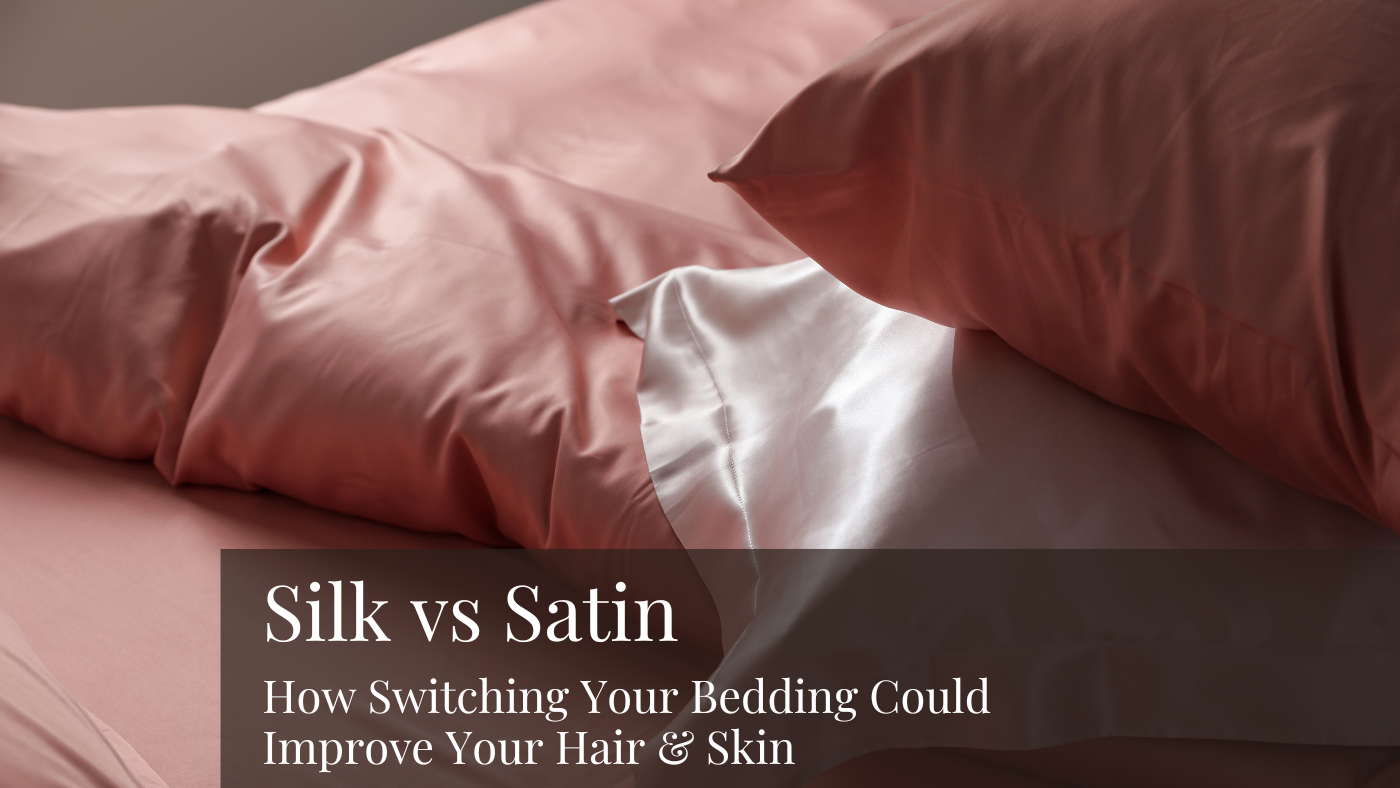
Silk Vs Satin: How Switching Your Bedding Could Improve Your Hair & Skin
Silk and satin pillowcases are not just indulgent accessories; they're essential allies in your beauty regimen. But what sets them apart from their cotton counterparts, and why should you be using them at home?
The first thing to understand is the difference between silk and satin. Silk is a natural fibre made by silkworms, known for its smooth texture and luxe feel, whereas satin refers to the weave of the fabric, rather than the fibre itself. Satin can be made from a variety of fibres, including silk and polyester, and has a smooth, glossy surface.
The smooth, friction-free surface found with silk and satin pillowcases is exactly why they are superior to cotton pillowcases – cotton (another natural fibre) has a much rougher surface, which can tug at the hair, causing frizz, split ends and breakage. Cotton pillowcases also absorb significantly more moisture than silk or satin, which can leave your skin dry and prone to irritation.
But which is better, silk or satin? Silk is renowned for its breathability and hypoallergenic properties, so if you have sensitive skin this is a great option for you, although it can be on the pricier side. Satin pillowcases, on the other hand, are available at a wide range of price points depending on what fibre has been used, so they’re a good way to introduce a gentler pillowcase without breaking the bank.
Satin pillowcases can be purchased from any good homewares store, including Ballantynes, Farmers and Bed, Bath & Beyond. For silk pillowcases, we love the range available at Monday Silks, a New Zealand company that uses the highest quality mulberry silk to craft their pillowcases.






